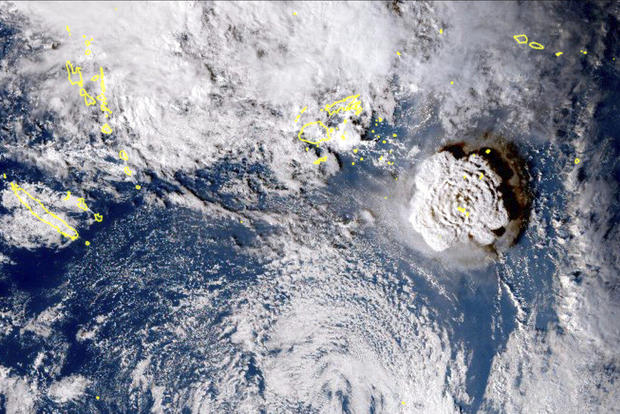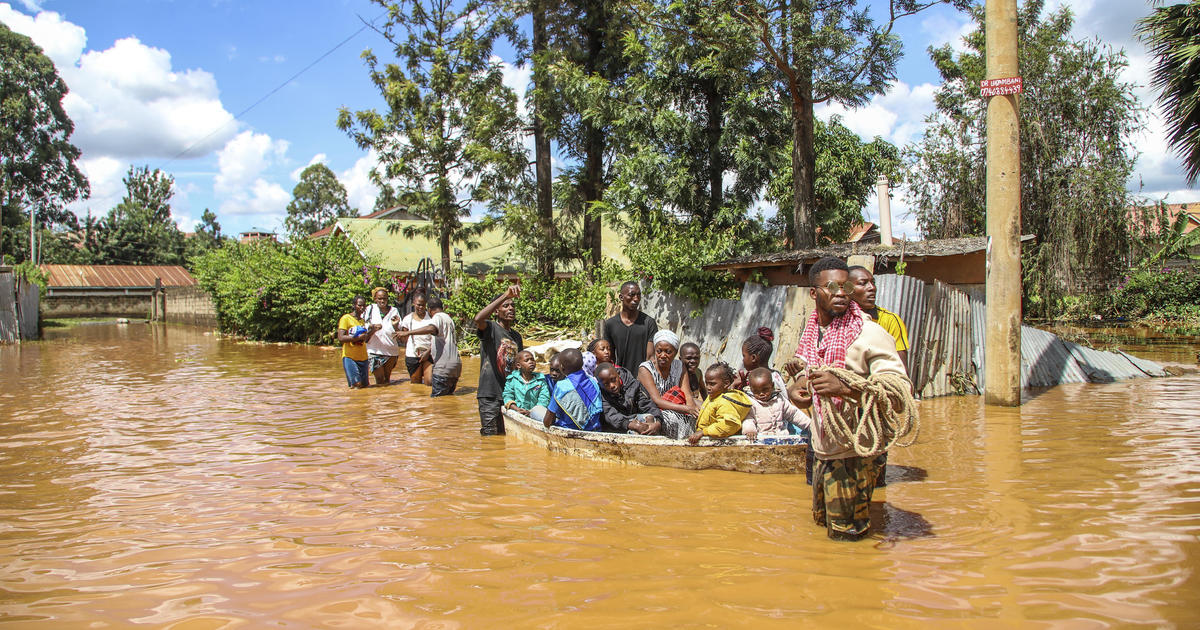Tsunami advisory lifted for U.S. West Coast after volcanic eruption in Pacific
The tsunami advisory was lifted Sunday for the parts of the U.S. West Coast and Alaska after a volcano erupted in the Pacific on Saturday.
The intiial tsunami advisory — meaning "a dangerous wave is on the way" — was issued for the West Coast and Alaska on Saturday morning.
Despite warnings from officials to stay away from northern California beaches, rescue crews pulled five people to safety after they ventured too close to the ocean waters churned up by the surge from Saturday's tsunami, CBS San Francisco reported.
A U.S. State Department spokesperson said Saturday that American citizens in Tonga and Fiji have been alerted to a tsunami warning. According to an alert by the U.S. embassy, Tonga's Meteorological Services have issued advisories for heavy rain, flash flooding and strong winds in lands and coastal waters and Fijian authorities cautioned residents to stay away from coastal areas.
The State Department spokesperson said they are not aware of any U.S. citizens affected as of this time.
On Saturday afternoon, the National Weather Service Anchorage canceled the tsunami advisory for "all coastal areas of the Gulf." The service added that the advisory was still in effect "for the Alaska Peninsula and the Aleutians until further notice."
An advisory was also issued for Hawaii, after an undersea volcano erupted Saturday near the nation of Tonga in the Pacific. It was later canceled after wave heights in the state started to diminish.
"Small sea level changes, strong or unusual currents may persist for several additional hours in some coastal areas and appropriate coastal areas and appropriate caution should be exercised by boaters and swimmers," the Pacific Tsunami Warning Center tweeted.
The California Governor's Office of Emergency Services said tsunami heights there were expected to be 1-2 feet, based on what was seen in Hawaii. Flooding was later reported near the Santa Cruz Harbor, and some residents were evacuated. CBS SF Bay Area reported that officials said over 100 people evacuated the Berkeley Marina, where an evacuation order was in effect for the marina boats, docks and shoreline.
San Francisco's Department of Emergency Management said strong currents were expected for hours, though residential flooding was not expected.
In Alaska, the biggest tsunami as of mid-morning was seen in King Cove — 3.3 feet, according to the National Weather Service.
Washington was seeing tsunami waves smaller than one foot, but forecasters warned that later waves could be bigger. Forecasters in Portland said Oregon has seen similarly sized waves, but still warned residents to stay away from beaches and to prepare for the possibility of higher waves.
In Tonga, any damage was unclear, as all internet connectivity with Tonga was lost on Saturday evening, according to Doug Madory, director of internet analysis for the network intelligence firm Kentik, The Associated Press reported. A tsunami warning was issued for all of the archipelago, according to the Tonga Meteorological Services, and 2.7 foot-waves were detected, Pacific Tsunami Warning Center data showed, according to the AP.
Live-aboards along the U.S. coast were urged to seek shelter.
A tsunami advisory is one level below a warning — and one step above a watch. It means dangerous waves of 1-3 feet and strong currents are expected.
"Remember that a tsunami isn't likely to look like a classic 'breaking wave;' it's more of a massive surge of water that can rise quickly and with great power," said the Hawaii Emergency Management Agency.
Signs of a tsunami include strong currents, a shoreline that has receded or is receding quickly, and unusual waves and sounds. "The tsunami may appear as water moving rapidly out to sea, a gentle rising tide like flood with no breaking wave, as a series of breaking waves, or a frothy wall of water," the National Tsunami Warning Center said.
Dave Snider, tsunami warning coordinator for the tsunami warning center in Palmer, Alaska, said it isn't an "everyday experience" for an advisory to be issued for this length of coastline. "I'm not sure when the last time was," he said.
"I hope that elevates the importance and severity for our citizens."




